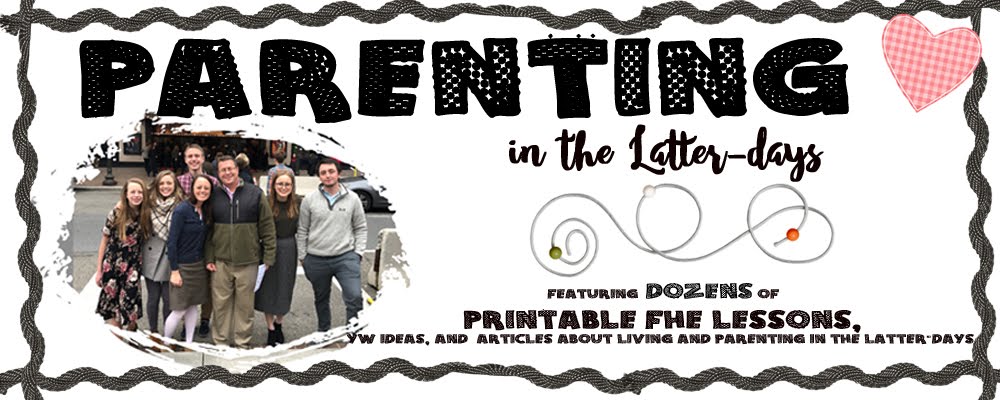
The Atonement and the Tree of Life
SONGS:
"Christ the Lord is Risen Today," Hymns, page 200
"He is Risen," Hymns, page 199
"He Sent His Son," Children's Songbook, page 34
ATONEMENT SCRIPTURES:
Alma 34:9--the atonement is necessary or we will perish
Alma 34:14-16--mercy can satisfy the demands of justice
2 Nephi 9:26--atonement saves us from hell
Doctrine and Covenants 88:6--Christ can comprehend all things
Mosiah 13:27-32--why we cannot be saved by just keeping the law of Moses
John 3:16-17--God sent Christ to atone for us because He loves us
EASTER FHE LESSON IDEAS:
Christ's Atonement--with the Parable of the Ketchup
Easter Walk with Jesus--go on a family walk and find objects that symbolize Christ's atonement
Symbols of Easter--a fun lesson to help tie the Easter Bunny into the true meaning of Easter
Easter Coloring Book--a simple coloring book about the life of Jesus and His sacrifice for us
OBJECT LESSON IDEA:
Drops of Awesome
QUOTES:
"No mortal can cry out, "He does not understand my plight, for my trials are unique." There is nothing outside the scope of the Savior's experience. As Elder Maxwell observed, "None of us can tell Chrsit anything about depression." As a result of his mortal experience, culminating in the Atonement, the Savior knows, understands, and feels every human condition, every human woe, and every human loss. He can comfort as no other. He can life burdens as no other. He can listen as no other. There is no hurt he cannot soothe, rejection he cannot assuage, loneliness he cannot console. Whatever affliction the world casts at us, he has a remedy of superior healing power." Tad R Callister, Infinite Atonement
"Each of us will taste the bitter ashes of life, from sin and neglect to sorrow and disappointment. But the atonement of Christ can lift us up in beauty from our ashes on the wings of a sure promise of immortality and eternal life. He will thus lift us up, not only at the end of life, but in each day of our lives." Bruce Hafen
"I suspect that many Church members are much more familiar with the nature of the redeeming and cleansing power of the Atonement than they are with the strengthening and enabling power. It is one thing to know that Jesus Christ came to earth to die for us—that is fundamental and foundational to the doctrine of Christ. But we also need to appreciate that the Lord desires, through His Atonement and by the power of the Holy Ghost, to live in us—not only to direct us but also to empower us...
The gospel of the Savior is not simply about avoiding bad in our lives; it also is essentially about doing and becoming good. And the Atonement provides help for us to overcome and avoid bad and to do and become good. Help from the Savior is available for the entire journey of mortality—from bad to good to better and to change our very nature." Elder David A Bednar
“It is through the grace of the Lord Jesus, made possible by his atoning sacrifice, that mankind will be raised in immortality, every person receiving his body from the grave in a condition of everlasting life. It is likewise through the grace of the Lord that individuals, through faith in the atonement of Jesus Christ and repentance of their sins, receive strength and assistance to do good works that they otherwise would not be able to maintain if left to their own means. This grace is an enabling power that allows men and women to lay hold on eternal life and exaltation after they have expended their own best efforts.” Bible Dictionary
"There is one who understands, who sympathizes. He was misunderstood, rejected, knew supreme loneliness, was poor and had not a place to lay his head, suffered anguish and conflict of mind. He understands. He can give pardon and bring peace." Marion D. Hanks
VIDEOS ABOUT EASTER AND CHRIST'S ATONEMENT

